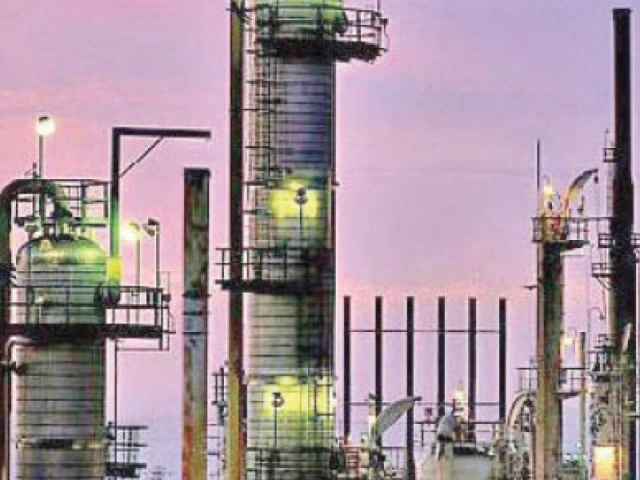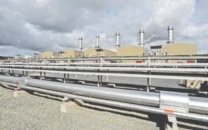Refineries warn of 'catastrophic effect'
Advisory body says new levies on furnace oil will raise operation cost, cause hefty losses

Oil Companies Advisory Council (OCAC) Chairman Adil Khattak has cautioned the government that the imposition of carbon and petroleum levies would have a catastrophic effect on refineries.
These refineries use furnace oil in-house as fuel in furnaces, boilers, power generation and other operations. "Applicability of the proposed carbon and petroleum levies on furnace oil being used in their own processes will result in a phenomenal increase in operation cost, which will cause heavy losses and the closure of refineries," he told The Express Tribune. He warned that the two levies would raise furnace oil prices by more than 80%, sounding the death knell for a few industries including refineries, shipping and independent power producers (IPPs), which use it as a fuel or consume it in their own utilities' operations.
"Is it disconnect between power and petroleum mandarins, ignorance of its negative fallout or mischievous intrigue of the import mafia," he asked and pinned his hopes on the petroleum minister.
Under the International Monetary Fund's Resilience and Sustainability Facility, the government is expected to impose both carbon levy and petroleum levy on furnace oil from July 1, 2025 to curb excessive fossil fuel consumption and gather additional funds for green energy programmes. This is for the first time the government will impose Rs79.5 per litre in levies on furnace oil including Rs77 worth of petroleum levy and Rs2.5 in carbon levy. This will inflate the price of furnace oil by Rs85,000 per ton (57%) to around Rs235,000 and may impact its demand.
If international crude oil prices stay above $75 per barrel during the remaining days of the ongoing month, the furnace oil price, after adding the proposed levies, may go up by 67% to Rs250,000 per ton.
The government may collect revenue of Rs75 billion on estimated consumption of around 0.9 million tons (950 million litres) of furnace oil during the outgoing fiscal year 2024-25 compared to 1.2 million tons in the previous year.
Over the last three years (FY23-25), Pakistan's furnace oil consumption has dipped sharply by an average of 40% per annum. Interestingly, 10 years ago, the furnace oil demand was around 9.2 million tons as the power sector was a major consumer since furnace oil-based electricity had a share of around 35% in total power generation. Of late, coal and liquefied natural gas (LNG) have substituted furnace oil, which now has a share of only 1.5% in electricity production. Local refineries produce around 2.5 million tons of furnace oil, of which 1.5 million tons are exported annually.
"We believe that the industry will continue to use furnace oil as an emergency fuel while gradually shifting towards renewable sources of electricity generation. We do not expect a major impact on listed firms as most of the companies have already shifted to coal and solar-based power generation," Sherman Securities said in a report.
The decline in furnace oil sales may not impact oil marketing companies (OMCs) as the fuel's share in total revenue is negligible. However, this is "negative" for refineries, where furnace oil comprises around 24% of production mix, it said.
"It is anticipated that refineries will now focus on exporting surplus quantity of furnace oil as local consumption will further dry down; otherwise they will be compelled to reduce refinery throughput or temporarily shut down production units, which will negatively affect their earnings."
Similarly, if surplus quantity is exported, their gross revenue margins (GRMs) may be affected as furnace oil usually sells at a discount in the export market. Assuming current industry GRMs of $10 per barrel, every $5 per barrel discount on exports will dent GRMs by 12%.
However, the impact varies on a company-to-company basis (considering the production mix) and depends on availability of the buyer in export markets. For north-based refineries, including Attock Refinery, the cost of export will be higher, hurting their earnings.




















COMMENTS
Comments are moderated and generally will be posted if they are on-topic and not abusive.
For more information, please see our Comments FAQ